Every year we survey authors to get a better understanding of self-publishing and share the resulting insights with the author community. Last year we broke respondents into five groups based on income level and detailed how practices and tactics change for authors as they earn more money.
This year we are focusing on the author community as a whole, and below we share general trends across multiple topics such as: How much are indie authors writing? Where is their income coming from? And, what marketing techniques are the most popular in 2021? Keep reading to find out the answers to these questions, along with some insight on differences across particular genres.
Introduction
To start, we want to say thank you to everyone who completed our 2021 survey. We really could not do this without you, so we hope you enjoy this post and find some value in the insights we gleaned from your responses. Thank you for your honesty and generosity.
Self publishing has changed a lot over the past couple of years. Book sales have grown and more readers have adopted eBooks since the start of the COVID-19 pandemic. In this post, we’ll reveal the results of our 2021 survey to give you an idea of where indie authors are in 2021.
Topic Areas
There is a lot of great information below. If you are interested in a particular topic area, feel free to jump to the section that most interests you. We cover:
Writing
How much do indie authors write?
Indie authors are writing a LOT! Of the authors surveyed, the median number of published books was 10. The average number of books published was even higher at 16.6, with some outlier authors publishing over 100 books.
Yes, you read that right. Some of our survey respondents have published over 100 books.
Of course, not every indie has published at this high volume, but it gives us a sense of the commitment that these authors have to their craft. Writing one book is a big achievement, let alone 10.
The longer an indie author has been in business, the more titles they are likely to have. This graph shows the median number of published books broken down by how long it has been since an author first published. As expected, the longer authors stay at it, the more books they publish.
What do indies write?
Survey respondents listed over 20 different primary genres for their writing. The most common primary genre was romance (a broad category), followed by fantasy, science fiction, and mystery.
These top genres do not come as a surprise as they follow the general market breakdown when it comes to popular genres.
One interesting finding of our survey is that while authors often have a primary genre that they write in, over 80% of authors surveyed also write in a different genre than their primary.
This shows that indie authors are taking advantage of their freedom. When you are running your own writing business and don’t need to pitch a publisher on your new book, you have the opportunity to go where your creative energy flows. Publishing a romance book doesn’t type-cast an indie author as a romance writer. Instead, they can continue to publish in any genre they desire.
Editing
Indies are investing in editing. Over 62% of authors surveyed use a professional editor, and we know from our reader data that this makes a difference. A book with typos can, unfortunately, result in unsatisfied readers and even a bad review.
Indie authors are investing in quality. Many of those who don’t use a professional editor are having family, friends or fellow authors help them out. 21% of authors surveyed do all of their own editing.
Genre highlight:
Romance and non-fiction authors were most likely to use a professional editor at over 67%. Fantasy authors were most likely to have another author edit their work at 12%.
So, it’s clear that indies are investing in editing… But how much money are they putting toward it?
Editing costs seem to vary for authors. 67% of indies are spending over $50 on editing per book.
Genre highlight:
Historical fiction authors seem to be spending the most on editing with 63% spending over $250 on editing per book. This makes sense. If you are a historical fiction author who is committed to time period accuracy, there is plenty of fact-checking to be done.
Publishing
Indies have some publishing options these days, but it will come as no surprise that one platform – Amazon – accounts for the majority of indie author income.
Amazon remains dominant
We asked authors to tell us which platform drives the most, second most, and third most sales for them. The results were stark.
Amazon drives the most sales for 95.5% of authors surveyed with direct website sales coming in second at 1.3%.
Apple drives the 2nd most sales for 28.6% of authors, with Amazon close behind.
Nook drives the 3rd most sales for 22% of authors.
Apple and Nook are certainly part of the indie eBook market, but they have a long way to go before they can grab that top spot from Amazon.
KDP Select
The exclusive versus wide debate still rages. Over one third of authors surveyed had all of their books in KDP Select with another third having none of their books enrolled. The rest of the indie author population seems to be dipping their toes in or out of KDP Select.
There are strong opinions about Amazon KDP Select. Many authors resent Amazon’s incentives to exclusively sell on the Kindle Store, and some publish their titles on multiple platforms on principle.
For others, the decision is made for economic reasons. Does enrolling your books in KDP select and gaining access to Kindle Unlimited payouts, countdown deals and free days pay off? Or do you earn more by having your books available on Amazon AND other platforms like Apple and Nook? The answer is different for different authors, but it’s safe to say that there is no consensus at this time.
Genre Highlight: 53% of thriller authors surveyed had all of their books enrolled in KDP Select. Thriller and cozy mystery authors are the most likely to have all their books enrolled in KDP Select. Non-fiction, fantasy, and paranormal authors are most likely to have none of their books in KDP Select.
Cover Design
Book covers are potentially the most important marketing asset for indie authors. A book’s cover declares its genre and grabs the attention of readers. So how are indie authors getting covers for their books? 53% have a relationship with a design professional who creates their covers, and 24% of indies create their own.
Genre Highlight: Romance authors were also the most likely to pay a professional to create their covers at 63%. Fantasy, paranormal, and non-fiction authors were the most likely to create their own covers, coming in between 28% and 31%.
Cover creation isn’t cheap. Getting a quality cover is important to a book’s success, but, especially for newer authors, spending hundreds of dollars can be a hard pill to swallow. 69% of authors are spending less than $250 for a cover, and very few are spending more than $500.
Genre Highlight: Fantasy authors seem to be spending the most on their covers with 49% spending over $250 per cover. This makes sense as many fantasy authors want their specific characters, artifacts, and settings reflected on their covers.
Audiobooks
Spoiler alert: Audiobooks are popular. 43% of authors surveyed have published an audiobook. This is a large percentage, and it shows that authors are investing in cultural trends. Audiobooks and podcasts have gained popularity in the last few years, and the indie author community is keen to give readers (or listeners) what they want.
Genre highlight: Thriller authors lead the pack with 53% having at least one published audiobook and romance authors come in at a close second with 51%.
Science fiction authors seem to be the least bullish on audio, with 35% of sci-fi authors having published an audiobook.
Marketing
There is consensus among authors that marketing is the toughest part of being an indie author.
79% of indies listed marketing as the toughest part of the publishing process. Actually writing the book came in second at 14%. This jibes with what we’ve heard from authors in past surveys.
Genre highlight: Over 80% of authors who primarily write mystery, paranormal, YA, or science fiction all said marketing was the toughest part of the process. Whereas paranormal romance authors seem to have the easiest time with marketing, with 67% saying it is the most difficult part of publishing.
Pricing
It’s perfectly understandable that some authors don’t like the idea of giving away a book for free. Writing a book takes a lot, so it can feel bad to simply give it away. However, giving away a book, especially if it’s a first-in-series, can be a great way to generate reviews, find new readers, and generate backlist sales.
65% of authors surveyed said that making a book free is effective, with 35% saying it was not. Whether this technique works or not is different for different authors, but it seems clear that a large portion of indie authors will continue to run free promos.
Genre highlight: 55% of historical fiction authors said free is effective, while 75% of cozy mystery authors said giving away a book is an effective technique.
We also asked surveyed respondents to tell us the current price of the least and most expensive books.
Over 50% of authors surveyed said the current price of their cheapest book was free or $0.99. This isn’t surprising given the popularity of free promos.
While indies are largely open to low prices, they are also listing some books for quite a bit more than $0.99. Over 22% have a book listed at $10 or more.
Indie authors do the work
Indie authors say marketing is the most difficult part of publishing, and they should know. 78% of authors surveyed are doing all of their own marketing, with 16% getting some help from an assistant.
Genre highlight: Young adult, science fiction, and cozy mystery authors were the most likely to do all of their marketing without any help at over 88%. Mystery, non-fiction, and romance writers were the most likely to have at least some help with marketing.
What is working for authors?
Which marketing activities are the most effective for indie authors? We asked survey respondents to rank these activities from one to five, with five being the most effective.
Bookbub Deals are unsurprisingly ranked as most effective at 3.6 with promo sites like Freebooksy and Bargain Booksy coming in right behind at a 3.5. This is a slightly biased sample as many respondents are Written Word Media customers, but many authors commented that while BookBub Deals drive many sales, it is difficult to be selected for one, which makes them hard to rely on as a marketing tactic. Promo Sites are more consistent and accessible for indie authors.
The next highest rated techniques were Amazon ads and Facebook ads at 2.7 and 2.6 out of 5. These low ratings show the difficulty of running digital ads. There is a steep learning curve, and even when you get them right they likely won’t result in the same boost as an email promo or BookBub Deal.
Overall, these ratings confirm what authors told us earlier in the survey: Marketing is really hard.
Income and lifestyle
We also asked authors some questions about their income and employment status. Here’s what we learned from our sample:
Income of authors surveyed
45% are making between $0 and $99 per month, and 30% earn over $1,000 per month off their writing. Some authors are making over $10,000 per month on their writing.
Occupation
55% percent of authors surveyed have a day job unrelated to writing, or someone in their household does.
Writing Habits
We also asked authors when they do most of their writing. Indies are writing a lot, so it’s no surprise that many are writing at any point during the day. Of note: a good number of our respondents tend to write in the morning.
Genre Highlight: Fantasy authors were the most likely to write late at night at 9%, and 33% of young adult writers surveyed write in the early morning.
COVID-19
We also asked authors about the impact of COVID-19 on their sales and outlook in 2020, and in 2021 the results remain largely unchanged.
Most authors surveyed haven’t seen much of an impact on their sales and have a relatively similar outlook on self-publishing to before COVID-19.
One positive we can see in these results is that while some authors are seeing fewer sales or have a more pessimistic outlook, a large share of authors have seen sales increase or have a more positive outlook. Overall that’s good news, though it doesn’t help much if you’re one of those authors who have seen sales decrease.
Data Methodology
It’s important to note that the data in this post is self-reported from a sample of just over one thousand authors. We believe authors to be an honest bunch on the whole, and we trust their responses. However, if you are a market research professional, this survey will likely not meet your standards for rigorous fact-checking or sample selection.
Conclusion
That’s a wrap! We hope you enjoyed these survey results and got a better idea of how your fellow authors are doing. Once again, thank you to all of you who participated in this survey and shared your experiences with us and your fellow authors. We could not do this without you.
As we move into 2022, what is your opinion on the state of indie authorship? What changes would you like to see in the industry in the future? Let us know in the comments!
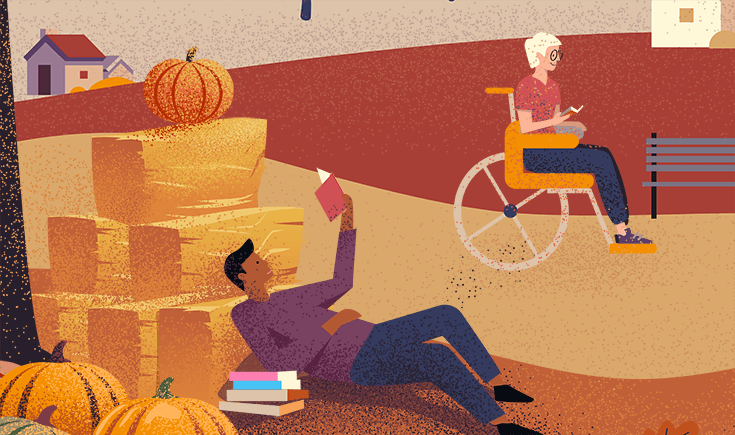
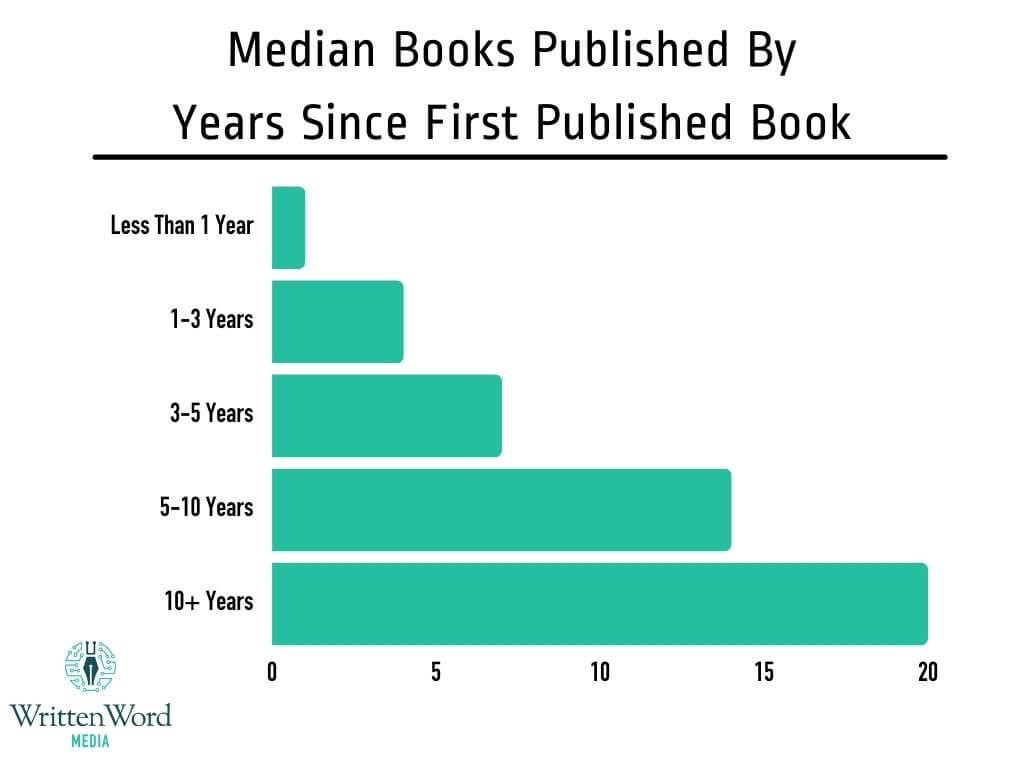



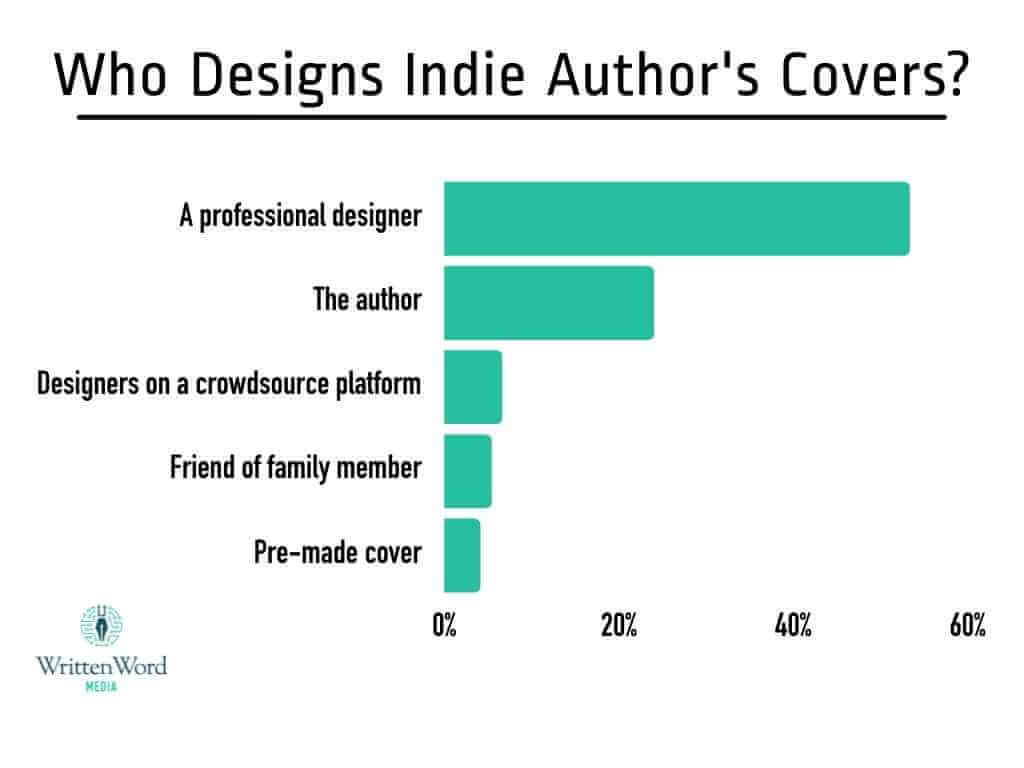






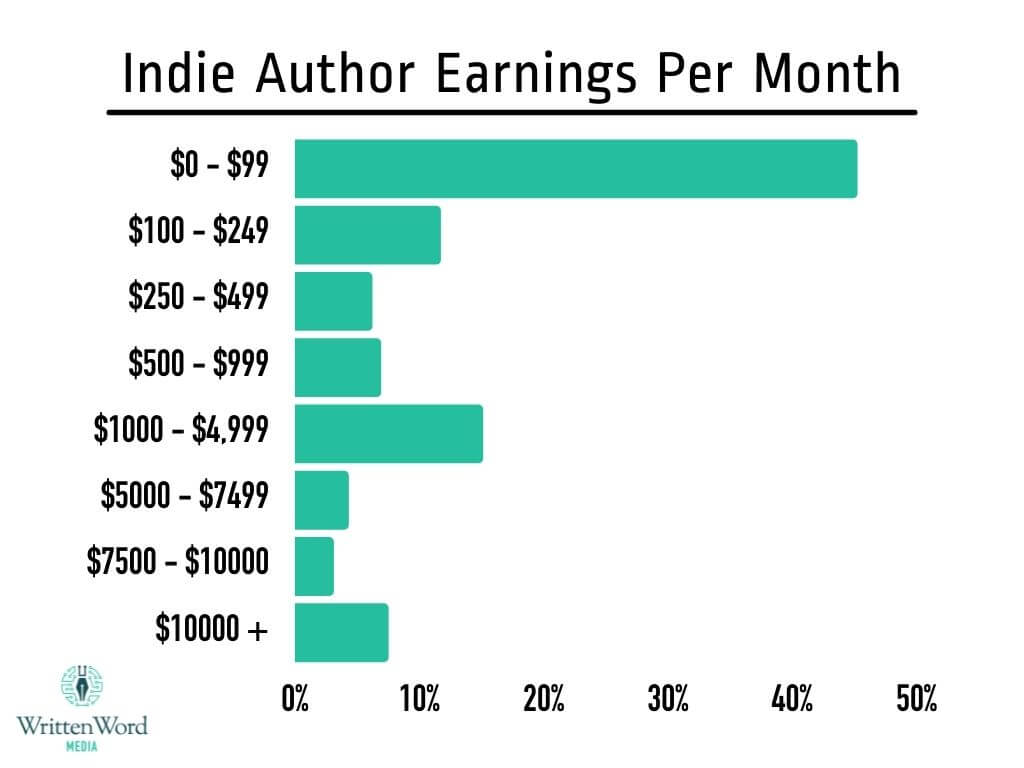
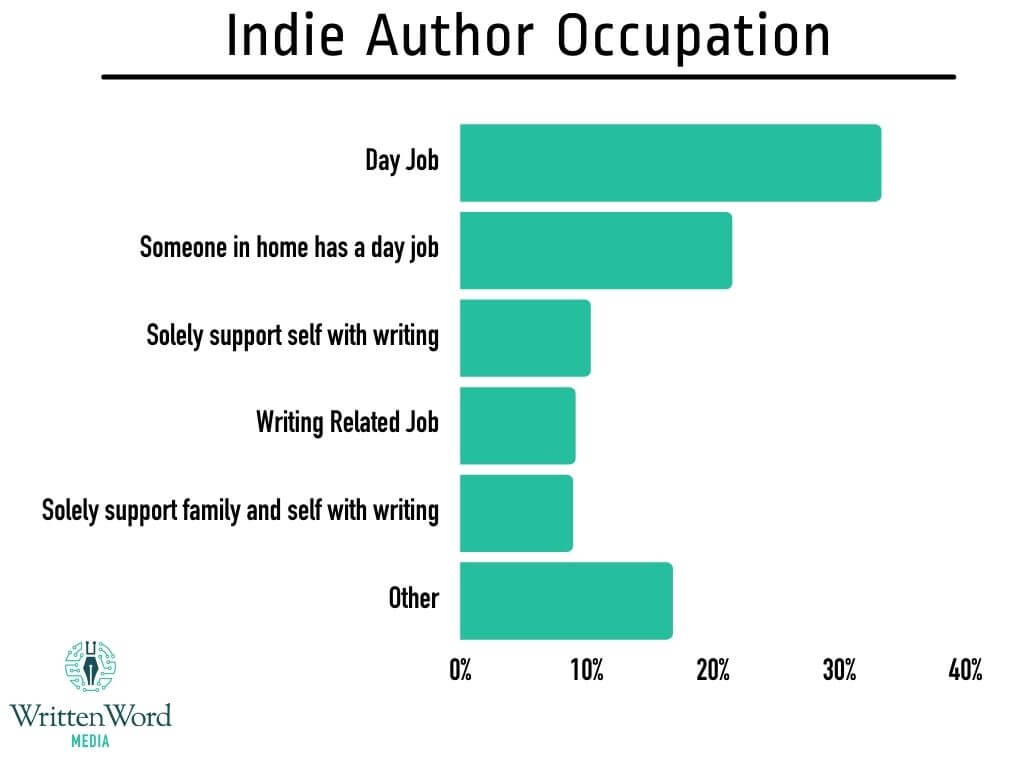



Thanks for putting this together. I appreciate the time that Written Word Media puts into this survey. One of the most difficult things for me to find is a measuring stick by which to compare my success (or lack thereof). Last year’s survey was really quite helpful in that it gave me insight into what successful indie authors were doing and how I was doing in comparison. The way this year’s survey results are broken down isn’t really helpful to me. I would love to see a follow-up post in which the data from 2021 is presented in the same way that it was in 2020. If not, then I would hope to see the 2022 survey broken down and presented like the 2020 survey.
Thanks for feedback Danny. Largely speaking, the trends that we saw in our 2020 post held true in 2021. We didn’t see many major shifts in the behavior of authors based on their income level in 2021 compared to 2020. Hope that helps!
Thanks – useful info
Thank you for this. I discovered your earlier surveys and Written Word Media through a variety of writing Podcast I listen too, including their back list episodes. Your survey from last year was instrumental in my goal setting – short, medium and long term, giving me rich parameters to develop my indie author business. By the end of 2022, I should have 4-5 books published and 4 every year after that. I work full time as a teacher and I schedule in full time hours between my teaching hours. My skills as a teacher has proven to be valuable. The goal is to leave teaching completely in 5 years. I loved the comment about writing a side genre. I’m a romance and contemporary women’s fiction writer and my books will have historical elements and magical realism elements. I love these surveys and I hope next year when I have published books I can participate.
Thank you for the kind words Valerie! I’m so glad you find this helpful. It’s a tribute to all of the authors who are willing to share so much information with us all.
I’m surprised, yet happy to know I’m not the only one who earns so little money for all the time, effort and cost indies to have, for a book polished and then published.
I was also happy to see that covid didn’t affect the authors. We still continued to write and we were still able to promote our book, using a different method.
Hey Karina, I’m glad you found the survey useful You may also be interested in our 2020 post where we break down the differences between authors by income level: https://www.writtenwordmedia.com/the-evolution-of-an-author-how-to-go-from-zero-to-100k-from-your-writing/
Thank you for taking the time to do this survey and to report it out. I’m not surprised by any of the findings, as it is what I hear anecdotally from authors. I do have one question around income that I believe is more helpful to people when making the decision around KU versus Wide.
You report that 95% of author’s incomes comes from Amazon. However, you also report that 30% of authors are exclusive to Amazon. That certainly muddies the number because 30% of the people ONLY have income from Amazon. My question is what percentage of income is from Amazon for those who authors who are wide. Is there a way to tease that out of the data by excluding those who are not wide? Or is it too messy to reliably report that because of people who dip in and out of exclusivity?
This is a great question Maggie. We actually don’t know percentages of income from different retailers, we just know that 95% of authors surveyed say that Amazon drives the MOST sales for them. For one author, this could be 95% of their income, for another it could be much lower like 50%, and they get 30% and 20% from other retailers. Breaking down the data by wide vs. exclusive authors has been an idea for a while, but like you say it gets messy fast with some authors having some books in and some books out. I suspect we could figure this out in the future though.
The data is enlightening but not surprising, especially related to marketing –an indie’s beast. What I don’t see, however, is the total number of respondents surveyed and/or the number of responses, which, in having, would provide a clearer scope for the breakdowns. There is the assumption that all questions were answered by the respondents; there is no accounting for missing data. Something to consider for next year’s data collection. Thank you for what has been gathered; a definite lack of author stats exists, and you filled the gap.
Thank you Rachel! We had just over 1,000 authors complete the survey, and each question included in this post was answered by at least 950 authors. Hope that helps!
Very encouraging article.
This article has excellent info on each aspect of writing and publishing. It’s clear enough for a newbie to learn from and use. Thank you!
Thanks. Interesting. Wondering how many authors participated in the survey…
Hello! We had just over 1000 respondents.
The information was interesting and helpful. I found the duel genre statistics great. Money earned was helpful and encouraging. Thank you.
I liked reading this!
Advertising is my favorite part of the journey. Writing is much harder than advertising. Numbers are fun to calculate. I like the idea of being more efficient.
However, I’d like to point out one tiny mistake.
On the “Indie Author Earnings per Month” graph, the second bar from the top says “$100-2499″. It should say $100-249”.
Thank you Sean! And great catch, we’ve fixed the graph!
The price of indie books is misrepresented. Ebooks and print books have different price ranges – if you price an ebook above 9.99, you are kicked into a lower royalty range than the 70% available between 2.99 and 9.99, and you lose money. However, print books can be priced appropriately (there are physical costs involved, and a different price structure). The results quoted above (How expensive is your most expensive…) should be quoted separately for ebooks and print books. Otherwise, you are comparing pineapples to squash.
Thank you for the info. I must admit: I was despondent before reading this post. I saw all these indie authors on social media and it seems they are all successful and selling thousands of books (so it seemed!). Now I realize I am belonging to the third-highest earner group, which surprised me. Not that it had been like that. Before Covid, I was ready to give up, but I switched languages and genres and over the last year my sales and earnings increased. For which I’m grateful, of course. This helped me to focus again, just when I needed it
Thanks for doing this survey! It really helps target our audience. I only started writing in Sept 2020, with my first book out in Jan 2021. Since then I’ve done 10 more. Being so new to the market my penmanship is unknown. I write Australian Colonial Fiction. which is a small genre, but is becoming more popular.